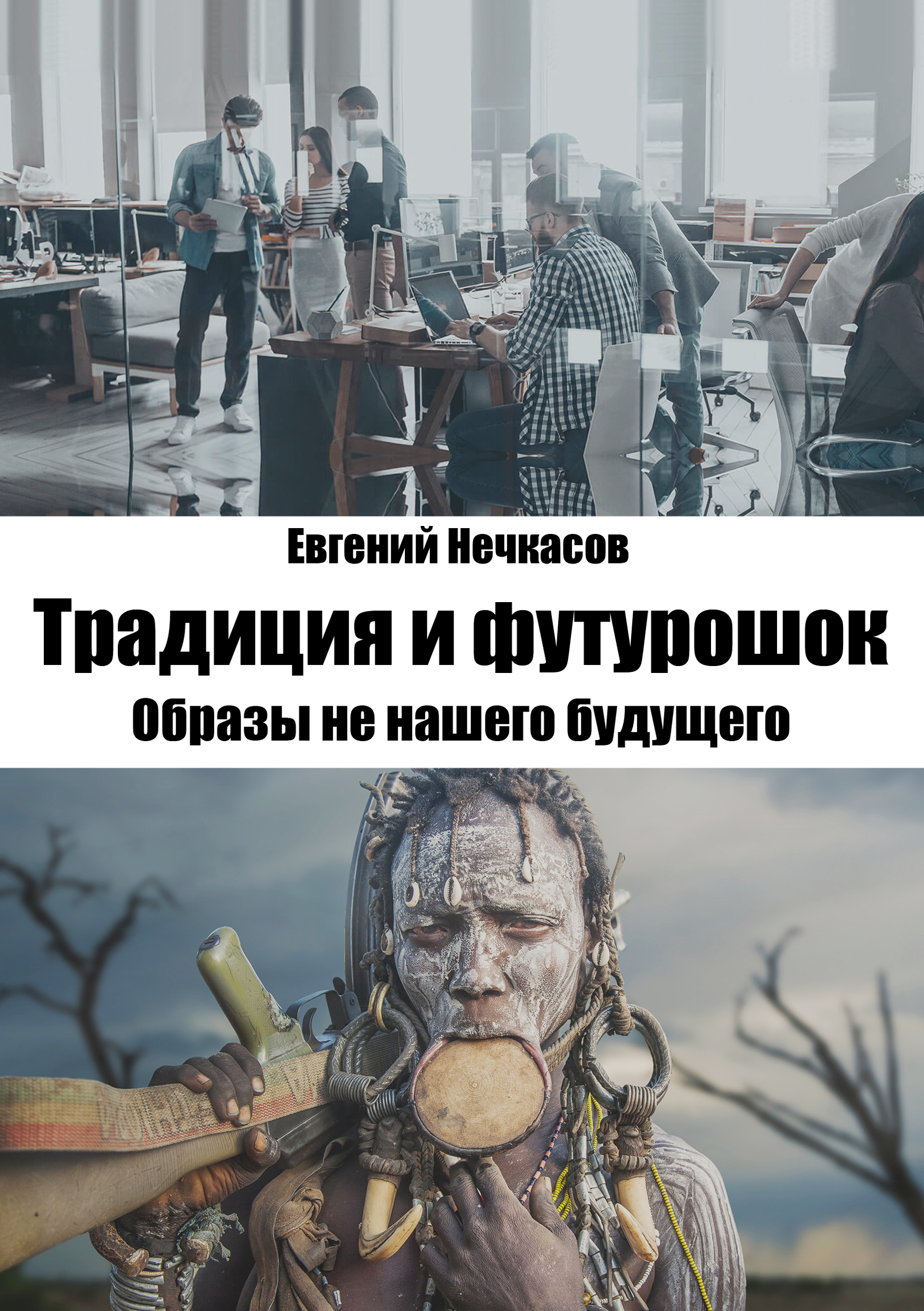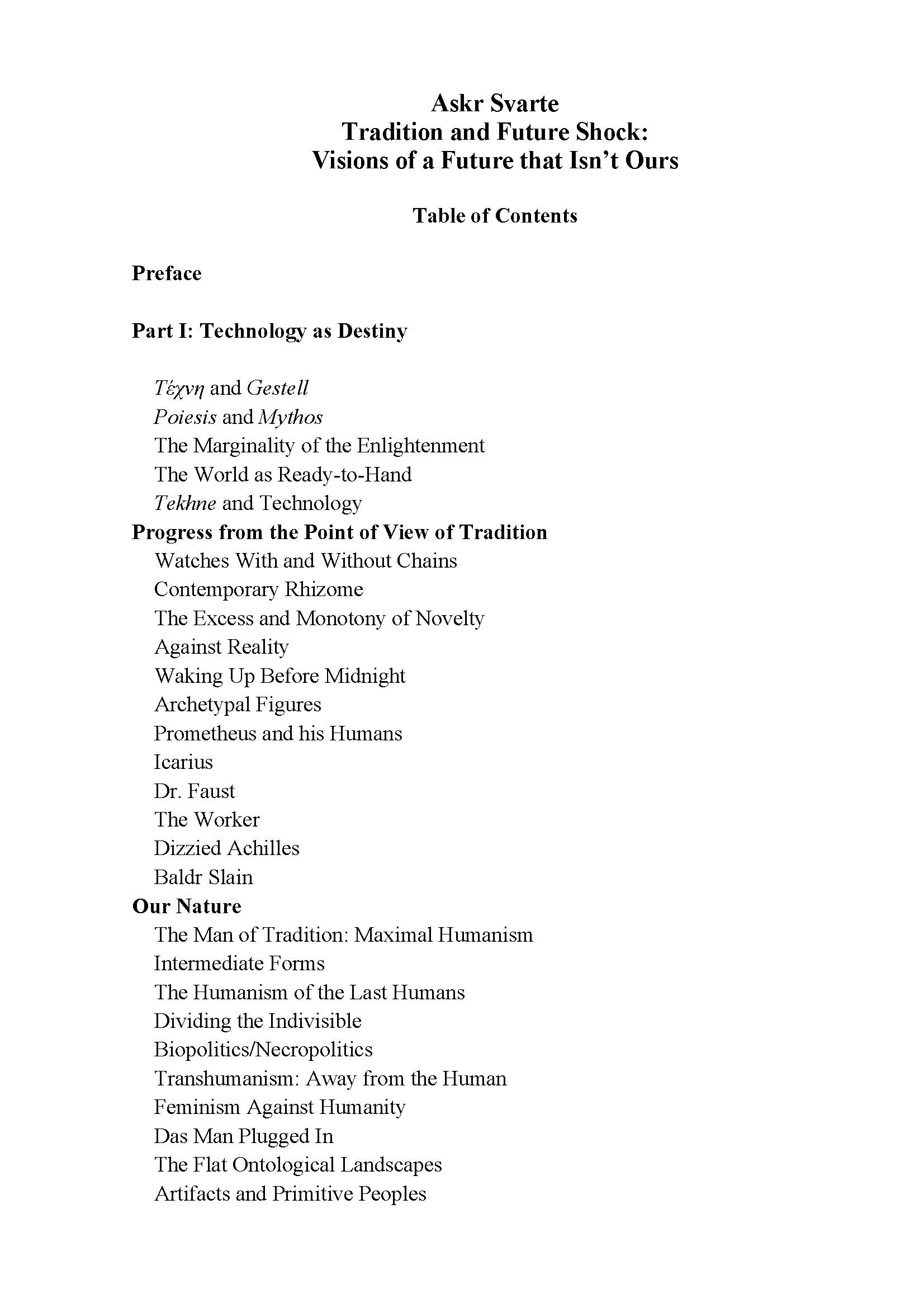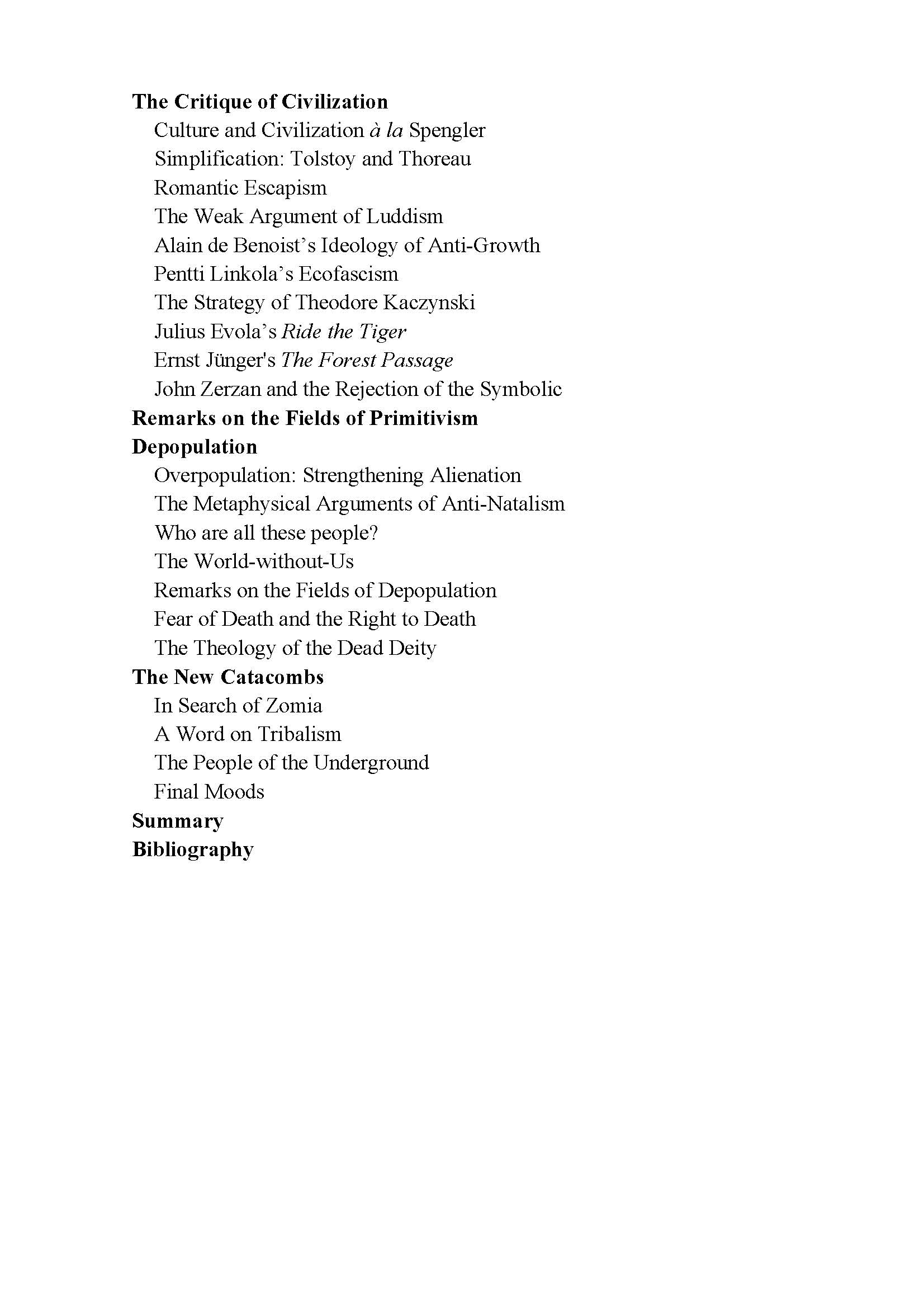Summary
The book Tradition and Future Shock is a comprehensive study and critique of the phenomenon of technology and the technogenic world born out of progress and industrial development from the standpoint of Pagan Traditionalism and the philosophy of Martin Heidegger.

This book consists of three major parts, each of which covers a separate angle or approach to the whole body of the phenomenon under study.
The first part of this book is dedicated to studying the metamorphoses of “thing” and “craft” from antiquity to modern times, as well as how the fundamental dimension of defining “what is being” and “what is a being” affects all aspects of the life of traditional and modern societies in both historical and geographical perspectives.
In this context, we examine the involution of such fundamental categories as “thing”, “being”, “craft” and “technology”, “time”, “space”, “reality”, “economy”, “human”, “death”, and “tradition.” These considerations draw upon numerous materials from the ancient history of the Indo-European peoples, the modern history of Western society, as well as archaic non-European tribes from across the world.
The second part of this book is devoted to analyzing and reviewing the artistic productions of modern culture, particularly futuristic and science-fantasy cinematography and literature. Culture is the field in which the dominant subject of industrial and post-industrial society expresses its imperatives and strategies. It addresses to humanity the prophecy of progress and presents its own therapy to compensate for the stress of the rapidly increasing pace of inventions and metamorphoses in the social and political body of society.
In the second section of this part, we transition from culture and futurological prognoses in cinematography to examining and analyzing the technological inventions, innovative gadgets, online services, and applications of the post-industrial landscape of the world that has taken shape.
At the core of this part of the book is the idea of illustrating the ways and strategies of the existential alienation of man from his external environment (local nature) and inner being (Dasein) that is already being realized now or already began centuries ago.



The third part of this book addresses possible strategies of resisting, overcoming, or alternatively living within the present world and possible variants in the future. The main part of this section is dedicated to surveying, analyzing, and synthesizing the ideas of radical de-industrialization and simplification on the one hand, and the positions of Traditionalism expressed by the later works of its classics on the other.
In this part of the book, we arrive at surveying and formulating the most problematic, acute, and controversial questions pertaining to the further existence of the world, humanity, families, and small groups and individual representatives and followers of Traditionalism which remain loyal to the ideals of the Sacred.
This third part pays particular attention to the question of death, which we unravel from the standpoints of demography, metaphysics, suicidology, and the theology of the “Dead Deity.”
This work concludes with a series of visionary outlines of possible scenarios and strategies for surviving in the alien futurological world of the future.













